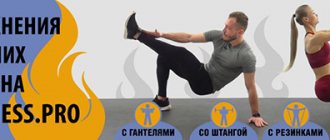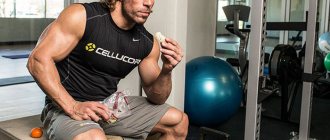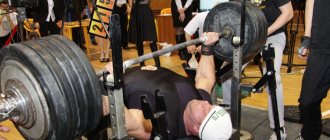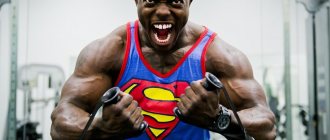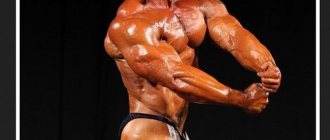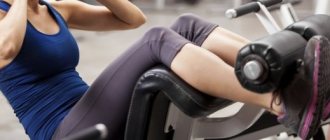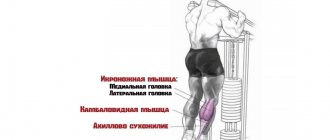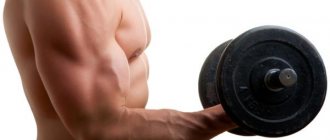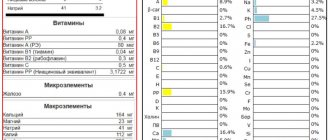Author: Arseni Igor (Moldova) 2012-09-16 Views:
363 787
Grade:
4.8
| Medals articles >> |
Articles are loading...
| Article medals: | more than 100 comments | more than 100 thousand views |
Why medals are given to articles:
| Bronze medal: | |
| 1. The article is in the TOP 100 2. The article has more than 3. The article has more than 100 | |
| Silver medal: | |
| 1. The article is in the TOP 50 2. The article has more than 3. The article has more than 500 | |
| Gold medal: | |
| 1. The article is in the TOP 10 2. The article has more than 1 3. The article has more than 1,000 | |
Sent by: Arseni Igor (Republic of Moldova, Ceadir-Lunga). Age - 25 years, physique - muscular, training experience - 7 years. Email
The duration of the complex is 6 months.
Results: bench press increased from 90 kg to 110. Squats increased from 85 kg to 115. Deadlift increased from 95 kg to 120. Weight dropped from 92 to 85 kg. But the fact that strength indicators have increased significantly indicates that the volume of adipose tissue has decreased, and muscle tissue has increased. Which is, without a doubt, an excellent result.
Goal of the plan: gaining weight
Difficulty – high
The training plan is a set of exercises that includes both basic and auxiliary exercises. What makes this plan special is that it lasts three weeks. Which you just alternate. Moreover, the principle of constructing training does not change, but the exercises change. Which is an additional factor that stimulates the growth of strength and mass of your muscles.
I would like to emphasize that even though Igor lost 7 kg of weight, the plan still predisposes him to gain muscle. Most likely, Igor simply pursued the goal of getting rid of excess fat. Which is what I achieved.
Select the exercise weight for this program
| Best result so far: | The calculator will show you what weight you need to take. But this does not include exercises on machines, but only with free weights. It is not necessary to complete all exercises. If you specify the weight for fewer repetitions, the result will be more accurate. In exercises with dumbbells, the weight of 1 dumbbell will be indicated, and with a barbell, taking into account the weight of the barbell. | ||
| Squats | kg per | once | |
| Barbell deadlift | kg per | once | |
| Bench press | kg per | once | |
| Standing chest press | kg per | once | |
| Barbell Curl | kg per | once | |
| Push-ups from the floor / from the floor from your knees | once | ||
| Dips/bench push-ups | once | ||
| Straight grip pull-ups | once | ||
Data saved
Data deleted
You did not indicate the purpose of your training
You did not indicate the purpose of your training
Delete exactly?
| YES | NO |
Slow muscle fibers
Red fibers, on the contrary, are intended for prolonged loads. These are slow-twitch fibers that are characterized by low strength, but low fatigue and are able to accumulate and store energy, and then gradually expend it.
Our task is to work on both those fibers and others. In this case, the result will be higher than if you pay attention only to weight training. Yes, strength training does not pump well the slow muscle fibers, which provide the bulk of muscle mass, but you will gain weight anyway. It is impossible to increase strength without increasing mass. At the same time, by developing fast muscle fibers, you thereby increase strength indicators and it will be easier for you to progress by training according to programs for gaining muscle mass.
Cluster training 55
Applying the concept of cluster training to the 5x5 mode is like filling a car with rocket fuel. I learned about the method from Charles Poliquin’s amazing book, “Current Trends in Strength Training.”
Cluster training is a combination of pause-rest training and standard training.
It works as follows. Take 90% of your one rep max and do one rep. Wait 10 seconds, do another repetition. Continue until you complete five repetitions in a rest-pause style.
After completing all five reps, take a three-minute break and perform another cluster set. Each series of repetitions is equal to one set. Applying this method to a 5x5 program, you need to do five sets of five in a rest-pause style.
What are the benefits of using cluster training?
With cluster training you get a much more intense workout. So if your main goal is to increase strength, you will definitely like it. Either way, the volume of exercise is the same as a standard 5x5 program, making 5x5 cluster training a great option for hypertrophy training (HST).
To further stimulate muscle hypertrophy, reduce the rest time between sets. For example, instead of taking three-minute breaks, take two-minute breaks. Despite the effectiveness of cluster training, it takes some time to put it into practice. If you've never done rest-pause training before, read articles on the topic and start with simpler programs.
Once you are comfortable with both 5x5 and rest-pause training, try combining both methods and start 5x5 style cluster training. It is very intense and three full body workouts will seem quite challenging to many. Try doing two full body workouts per week, with at least a two-day break in between.
Or split your upper and lower body training days and try training four times a week. Upper body workout on the first day, then a day off, then a lower body workout the next day, another day off, and then an upper body workout again, etc.
I would also recommend choosing those exercises for cluster training that do not require a lot of time to prepare. For example, the bottom position bench press is better than the standard bench press, where you have to rack the barbell after each rep.
Example of cluster training in 5x5 style
1st and 3rd day
- Bench press (bottom position)
- Reverse grip pull-ups (with weights)
- Barbell curls
2nd day
- Barbell squats (bottom position)
- Glute and hamstring curls (standard 5x5 style reps)
- Calf raise
- Turkish get up - 2x5 (standard reps)
4th day
- Barbell deadlift
- Single leg squats
- Seated calf raises
- Windmill (dumbbell) - 2x5 (standard reps)
Take three-minute breaks between cluster sets and two-minute breaks between exercises. Follow cluster training for 4-8 weeks and then return to the standard 5x5 routine.
Number of repetitions at different degrees of preparation
If you are new to the gym, then you should first accustom your body to the load. The nervous system must adapt to the stress and learn to cope with it correctly. The general recommendation in this case would be to perform an average of 3-5 sets with light weights and 12 to 15 repetitions.
When the initial level has already been completed and some experience has already been gained, you should move on to heavier training with fewer repetitions, but with an increased number of approaches. Your muscles will sooner or later get used to and adapt to the loads and to stimulate them you will need to lift working weights. The general recommendation for advanced athletes is to perform a large number of sets of 4 to 6, not counting warm-ups, with reps ranging from 6 to 8.
Variability of loads in strength training without increasing mass
Simultaneously with the increase in the athlete's training, it is necessary to increase the variability of loads.
Previously, among security forces, the basic training scheme was the following - 3 weeks of increasing loads and a week of rest. However, in the USSR it was used only in training novice weightlifters. Experienced athletes did not increase the load weekly, so as not to be physically exhausted after three or four weeks. Of course, they changed the intensity of the training unexpectedly for the body, but they did not do it so dramatically. Professor Vorobiev, in the course of his research, found that an unexpected change in loads during the training process is most effective in comparison with others. Based on the results of the studies, it can be stated that such changes in load were more than 60 percent more effective compared to a gradual increase in intensity.
https://youtu.be/FCg8OBDbjN4
Number of repetitions for different training goals
- To develop strength, perform up to 8 repetitions
- To build mass, perform 8 to 12 repetitions
- To develop endurance, perform 12 repetitions or more
When planning your training process, do not try to find some kind of universal solution for all occasions. Explore, experiment, change training programs, use different approaches. Train for strength, for mass, work on each type of muscle fiber, this will give a total effect and the result will not be long in coming.
Strength, mass or endurance?
Strength work can serve different purposes: building muscle mass, increasing maximum strength... But it happens that neither one nor the other is necessary, and excess weight is sometimes even harmful. What exactly are your goals, and how to achieve them?
The most common idea of strength work: exercises for muscle growth. The main mode of such training (after warming up) is to perform a series of approaches, in each of which they do from 8 to 12 repetitions, reaching the limit (when one more repetition can no longer be completed). As a rule, the weight required for this number of repetitions corresponds to 80-85% of the maximum effort. This method of training is so ingrained in the minds of the practitioners themselves and their instructors that even representatives of sports science often call it “traditional” or “classical.” True, most often this is said in the context of contrasting these “classics” with those methods of strength training that most athletes and physical educators actually need. Why is that?
Firstly, a lot depends on what is your goal? If you compete in bodybuilding competitions, the method described above is your way to go. If you just need to lose weight, then there are other types of training that deserve no less attention. Well, if you need to maintain health, then working exclusively on muscle hypertrophy is not necessary. At the same time, it is still important to do strength work - it is useful for most of us both for keeping ourselves in good shape and for achieving personal sports goals. There is no contradiction here - the light has not converged on “pumping up” muscles.
What is given by nature
It's worth starting with the fact that almost any healthy increase in physical activity creates the prerequisites for muscle growth and weight loss. This is due to changes in the level of hormones (hormonal status) released in healthy people in response to muscle activity. Sometimes they say that this is not so much muscle growth, but rather their restoration to a certain genetically specified norm. So, if an office worker, after a long period of physical inactivity, starts doing something - playing football, kayaking, hiking - he will begin the processes of tissue restoration to the very “norm” that his body “remembers”. The path is long, but safe.
You can build up the mass of individual muscles a little faster (if such a goal is worth it) by doing short-term (!) aerobic work (from 30 seconds to a minute) with great effort - riding a bike up a hill, running up a hill, skiing “on terrain” at partial speed. coordination (only on the arms or only on the legs) and so on. This is not yet a sport, but it is already good physical education. There are fewer health risks than with “traditional” strength exercises (see below), and there is more pleasure - at least from the fact that all this is done in nature, and sometimes in company. But the main thing is that such physical education strengthens the cardiovascular system, trains the endocrine system well, and ventilates tissues (stimulates the processes of aerobic glycolysis and the growth of the mass of enzymes that ensure cellular respiration). In short, it gives you a lot of things that are directly related to overall health. However, let us once again pay attention to the short duration of such intervals - too long will put a high load on the heart, which is dangerous for poorly prepared athletes.
If “iron” beckons
If you really like heavy weights, then go for it. But for health, and not anyhow. From a scientific point of view, the traditional “rocking chair” is nothing more than the desire to achieve hypertrophy (or hyperplasia) of glycolytic muscle fibers (GMF). These fibers “swell”, increasing the diameter of their cross-section, which also results in an increase in strength. Please note two important notes. Firstly, the fact that 8-12 repetitions to failure lead to hypertrophy of just a part of the muscle fibers, and not the entire muscle. Secondly, this path provides a noticeable increase in mass, but a slightly smaller increase in strength than exercises aimed specifically at developing strength (this is why bodybuilders are sometimes called “butchers”).
If you like the hardware, but the meat is not your main goal, you can work on increasing your strength. At the same time, muscle mass will also grow, but not as quickly as that of pure “jocks”. Working to increase strength will require heavier weights (90-97%), fewer repetitions and longer rest between sets. As a rule, perform from 2 to 6 repetitions with an interval of 3 to 10 minutes. With such work, muscle acidification is not so abundant (therefore, mass grows more slowly), but better stimulation of innervation mechanisms is achieved, which leads to adaptation at the level of neuromuscular reactions and, ultimately, to the ability to develop greater maximum effort . Just remember that strong straining is dangerous for beginners, so it’s better to start with lighter weights and faster movement speed, maintaining continuity of breathing.
If, on the contrary, you do more repetitions with less weight (more than 25 repetitions), you will gain muscle endurance and significantly (!) reduce the risks of vascular diseases that occur with any strong straining. The latter is important to know for everyone who takes up iron. Too rapid progress or too much weight greatly increases the risk of vascular diseases (when working with large muscle masses) and very often leads to hypertension. As a rule, it does not “cover” immediately, but over time. But you’re not working on your body just for today, right?
Another way to work with iron is to perform movements at high speed with weights of 50-70% of the maximum voluntary force (term). This path will make you faster and sharper, including some gains in strength. The mass will grow minimally. This training path is well suited for martial arts, and is often used in cyclic sports.
The next mode of working with iron, which is good to know about: the use of large weights (70-90% of the maximum) with significant pauses after each repetition (allowing the muscles to deoxidize). In this mode, you can perform quite a lot of repetitions (from 20-30 at first to 50 or more after getting used to it). Here you can “punch” the muscle well, forcing it to work out more fibers than with “traditional” pumping. In addition, the described regime promotes the growth of strength or speed-strength endurance (depending on the selection of the “effort-speed” pair).
Finally, one cannot help but mention static-dynamic exercises, during which hypertrophy of oxidative muscle fibers occurs - the same ones that provide endurance, practically do not get tired and “eat” more lactic acid than they secrete it . Such exercises are performed with light weights (from 20 to 60% of maximum strength), but always without a relaxation phase (otherwise you won’t tire the muscle with little effort). Do several sets of 3-6 approaches, in which 30-40 seconds under load alternate with a 30-40 second pause (breaks between sets are 10 minutes). This type of strength work was invented for those who require good endurance and low fatigue. And who can say that he is not interested in this? Just a couple of important nuances: static dynamics are performed in cycles: no more than two weeks in a row followed by a week of light aerobic work in one cycle and no more than two such cycles in a row without a long break for other types of training activities.
Man in the mirror
Before choosing one or another type of strength work, try to soberly assess yourself and your needs. Are you sure you want to become even bigger? Or, on the contrary, is it more important to lose excess weight? Do you need traditional strength work for hypertrophy or is something else preferable? Do you only need 10-15 large muscles of your body, or do you want them all to work normally (there are more than 600 of them)?
Let us also remind you that in addition to the “hardware” that is in fitness clubs, there are horizontal bars, parallel bars and a lot of other good exercise equipment - from undeservedly forgotten medicine balls to the now fashionable TRX. Some of them can solve exactly your problems more effectively than a “classic” rocking chair. Look around you and make intelligent choices. And keep in mind that in each type, no matter what you choose, there are many important little things on which progress sometimes depends.
Good luck!
The place of Newton's second law in classical mechanics
You may be interested in: Technological determinism: concept, basic concepts, theory
Classical mechanics is based on three pillars - Isaac Newton's three laws. The first of them describes the behavior of a body if external forces do not act on it, the second describes this behavior when such forces arise, and finally, the third law is the law of interaction of bodies. It is not for nothing that the second law occupies a central place, since it connects the first and third postulates into a single and coherent theory - classical mechanics.
Another important feature of the second law is that it provides a mathematical tool for quantitatively describing interaction - the product of mass and acceleration. The first and third laws use the second law to obtain quantitative information about the process of action of forces.
